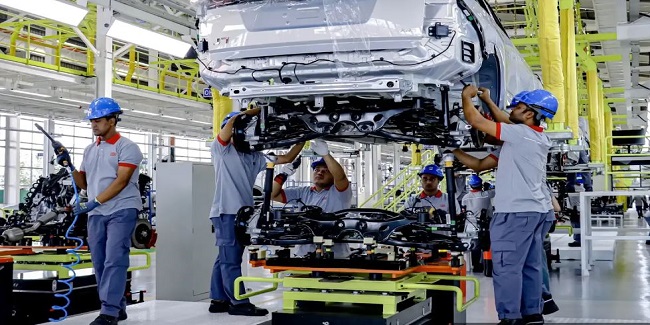Malaysia’s potential to become ASEAN’s auto hub is not limited to plans to boost car exports, but also to increase exports of parts and components, such as the Malaysian technology industry, robotics and IoT (MARii).
Therefore, the Malaysian auto and parts industry will continue to increase auto exports to achieve economies of scale and make auto parts sales at more competitive prices, said Azrul Reza Aziz, CEO of MARii. He said the increased sales volume could reduce production costs and therefore the cost of equipment, making them more competitive than those in the region and neighboring countries where auto parts are cheaper. ‘because of their market share.
Car manufacturers, car industry analysts and economists say these efforts are key to establishing Malaysia as a regional car hub for ASEAN and managing the region’s consumer base. almost 700 million. We encourage original equipment manufacturers (OEMs) to export not only cars, but also parts and components, thereby improving the overall competitiveness of the Malaysian automotive industry, Azrul told Bernama.
He was responding to reports that Malaysia’s supply chain costs are 30% higher than China’s and 10% higher than Thailand’s. Azrul said that it is very important to understand that these prices vary depending on the cost structure of each company, the type of vehicle and the supply cycle environment.
He added that companies may have different levels of maturity in their supply chain, which will affect their overall profitability. Malaysia has a lot going on, because despite showing great progress, its total vehicle volume (TPV) is only 775,000 vehicles, compared to China’s TPV of 30 million vehicles and 1.8 million in Thailand.
Reza said the Malaysian industry will change by embracing digital growth, using Industry 4.0 technology to solve problems. This is very important as the country aims to achieve carbon neutrality by 2050, focusing on the development of infrastructure for electric vehicles, autonomous vehicles and infrastructure for the Internet of Things, he said.
“Given the constraints of purchasing equipment in bulk due to financial issues and other expenses related to product management and processing, digital solutions provide a break in terms of insight and real-time decisions. In addition, digital solutions enable better performance and effective progress in research and development, including through the use of computer-aided manufacturing technology, he said.
Meanwhile, the president of the Malaysian Automobile Association Shamsor Zain said China and Thailand’s national pool of population, vehicles and maintenance network is bigger than that of Malaysia. Their reduced dependence on exports means that their suppliers are less vulnerable to exchange rate fluctuations.
Similarly, these fees are highly dependent on changes in supply and demand, he said. “Although Malaysia has a mature automotive supply chain, dating back more than 50 years, the cost to establish or upgrade new infrastructure and technology is very high.
The most effective way to support these investments is for Malaysia to position itself as an export destination, he said. Shamsor said that the local car industry should strengthen its skills in terms of quality, capacity and productivity in the manufacturing areas by increasing exports and increasing the capacity of OEMs.
He added that manufacturers often have different ideas about how to structure their business models, and cost is only one factor.



